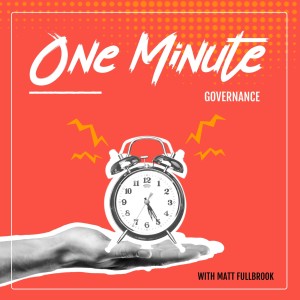

184. I just wanna break the rules (Condition #32: policies & by-laws)
I don’t think I’ve said it out loud yet, but the most important theme of season 4 of OMG is that I’m trying to convince you that experimentation is at the heart of good governance. In fact without experimentation - and by extension, creativity – I’m not convinced that good governance is possible. One of the great tragedies of the past two-plus decades of corporate governance trends is how many organizations and governance professionals basically see corporate governance as precisely equal to crafting, deploying and adhering to policies and by-laws. Don’t get me wrong, I think it’s *really* important to agree on and enshrine important stuff into binding rules. A good and common example is setting a threshold, in dollars, for transactions below which boards will just trust management’s judgment. It saves a lot of drama and time. But it’s also a good example of a rule that’s gonna need to change as an organization grows and shifts. A threshold of $5000 might eventually become $5 million as the scale and materiality of transactions grows. And if we think about cultivating effective conditions for making decisions, this is a great example of a type of rule that can be a tangible illustration of good governance. But if you’re the type of person who thinks making decisions about policies and by-laws is the same as good governance, you and I have really different concepts of what effective conditions look and feel like.
More Episodes
All Episodes>>Creat Yourt Podcast In Minutes
- Full-featured podcast site
- Unlimited storage and bandwidth
- Comprehensive podcast stats
- Distribute to Apple Podcasts, Spotify, and more
- Make money with your podcast












